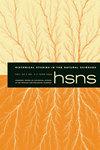First Peoples of the Atomic Age
IF 0.3
3区 哲学
Q2 HISTORY & PHILOSOPHY OF SCIENCE
引用次数: 1
Abstract
In this article, I explore the history of biological materials that scientists and physicians collected from those who survived the atomic bombings at Hiroshima and Nagasaki. Originally acquired beginning in 1946 to track the genetic effects of radiation in the offspring of atomic bomb survivors, these materials gradually became relevant to other kinds of biological and biomedical research. Many of the samples still held at the Radiation Effects Research Foundation are from individuals (approximately 65 percent) who are no longer alive. To scientists and others engaged with their management and use, these samples are uniquely valuable, timeless, a legacy for “all mankind.” Like materials taken from isolated populations around the world, the atomic bomb samples are both unique and universalized. They join other forms of Big Data in their seamless transition from dramatic specificity to general relevance. My paper explores what such legacies mean, and what they might teach us about the history of biology, the practices of biobanking, and the post-1945 Pacific world. This essay is part of a special issue entitled Pacific Biologies: How Humans Become Genetic, edited by Warwick Anderson and M. Susan Lindee.原子时代的第一民族
在这篇文章中,我探索了科学家和医生从广岛和长崎原子弹爆炸幸存者那里收集的生物材料的历史。这些材料最初于1946年开始获得,用于追踪原子弹幸存者后代的辐射遗传影响,后来逐渐与其他种类的生物和生物医学研究相关。许多仍保存在辐射效应研究基金会的样本来自于已经去世的人(大约65%)。对于科学家和其他参与管理和使用它们的人来说,这些样本是独一无二的,有价值的,永恒的,是“全人类”的遗产。就像从世界各地孤立的人群中提取的材料一样,原子弹样本既独特又普遍。它们与其他形式的大数据一起,从戏剧性的特殊性无缝过渡到普遍相关性。我的论文探讨了这些遗产的意义,以及它们可能教给我们的关于生物学历史、生物银行实践和1945年后太平洋世界的东西。这篇文章是沃里克·安德森和M.苏珊·林迪编辑的题为《太平洋生物学:人类是如何遗传的》特刊的一部分。
本文章由计算机程序翻译,如有差异,请以英文原文为准。
求助全文
约1分钟内获得全文
求助全文
来源期刊

Historical Studies in the Natural Sciences
社会科学-科学史与科学哲学
CiteScore
1.00
自引率
0.00%
发文量
24
审稿时长
>12 weeks
期刊介绍:
Explore the fascinating world of Historical Studies in the Natural Sciences, a journal that reveals the history of science as it has developed since the 18th century. HSNS offers in-depth articles on a wide range of scientific fields, their social and cultural histories and supporting institutions, including astronomy, geology, physics, genetics, natural history, chemistry, meteorology, and molecular biology. Widely regarded as a leading journal in the historiography of science and technology, HSNS increased its publication to five times per year in 2012 to expand its roster of pioneering articles and notable reviews by the most influential writers in the field.
 求助内容:
求助内容: 应助结果提醒方式:
应助结果提醒方式:


